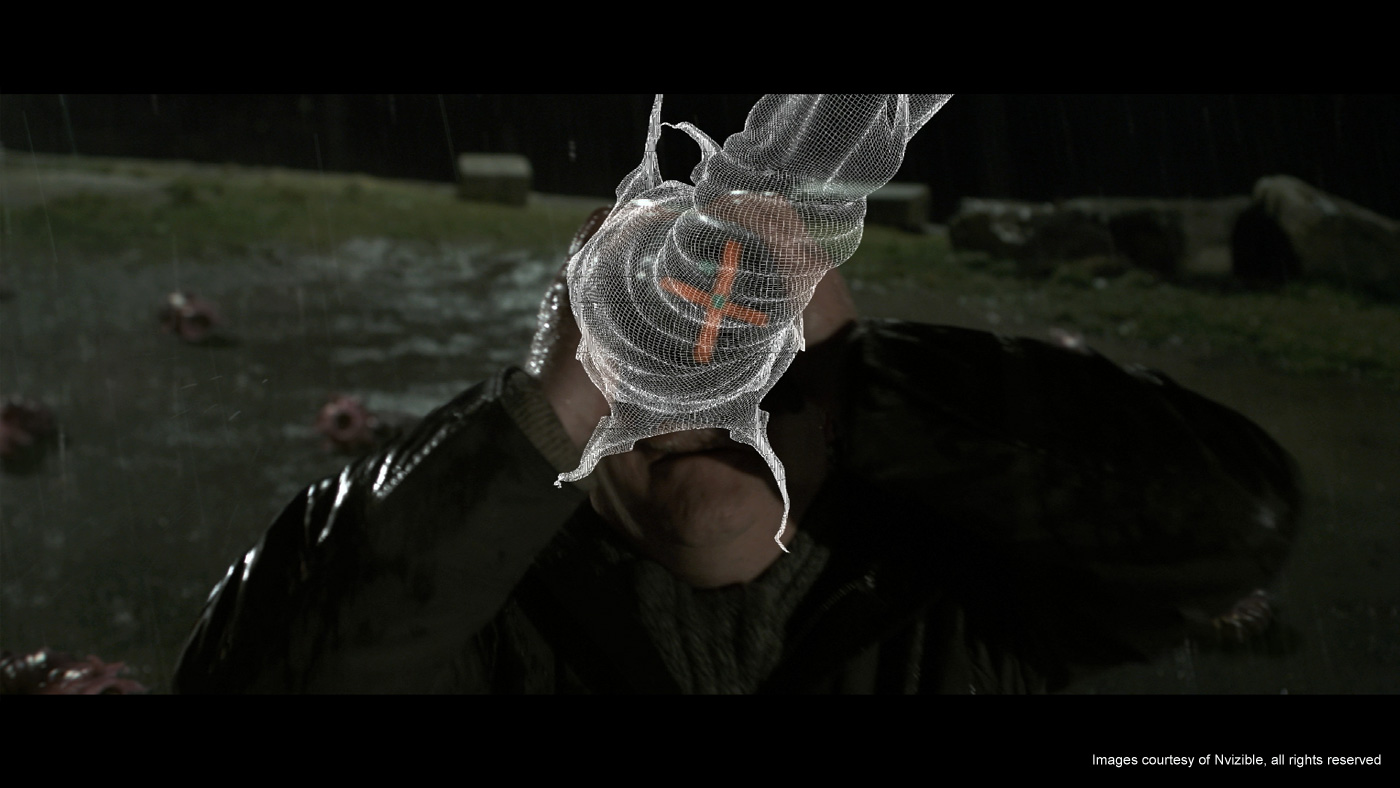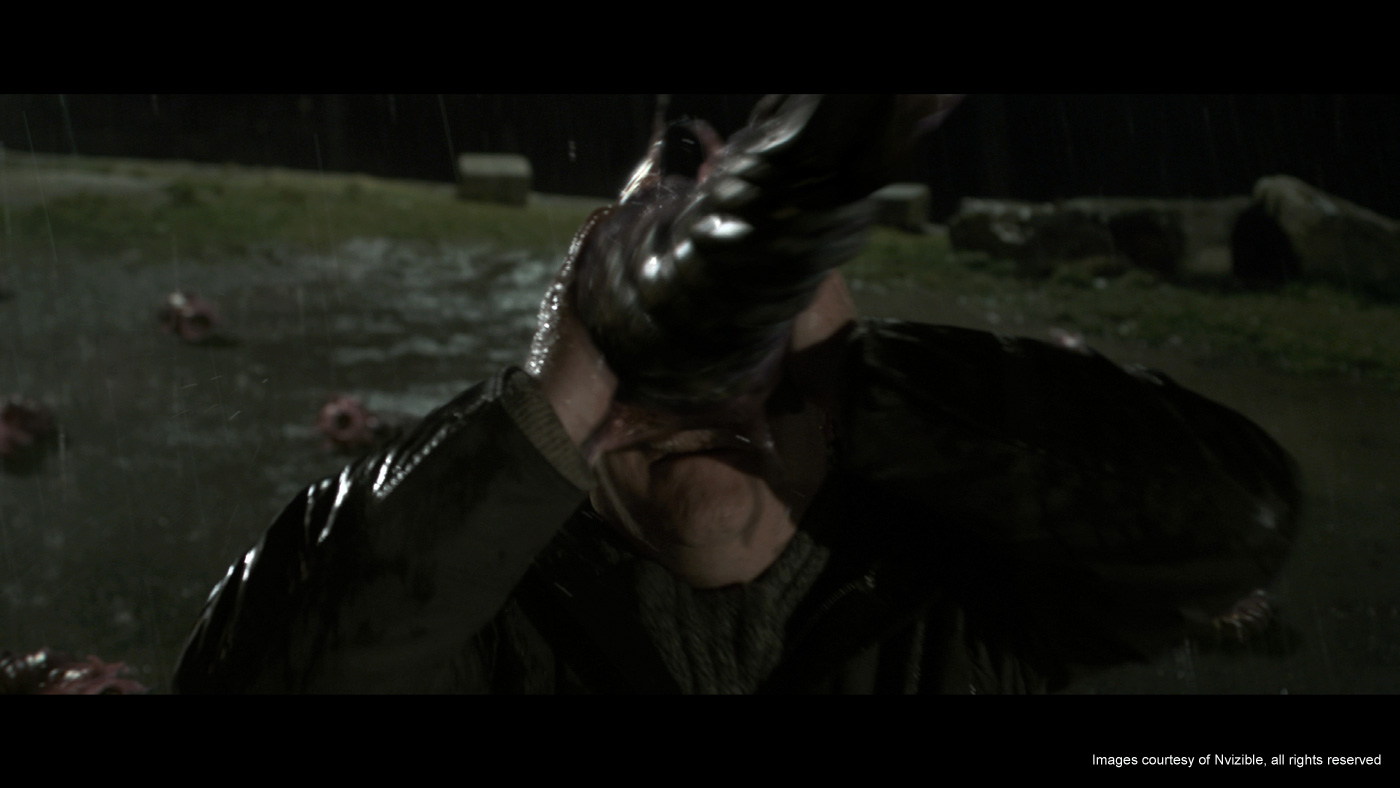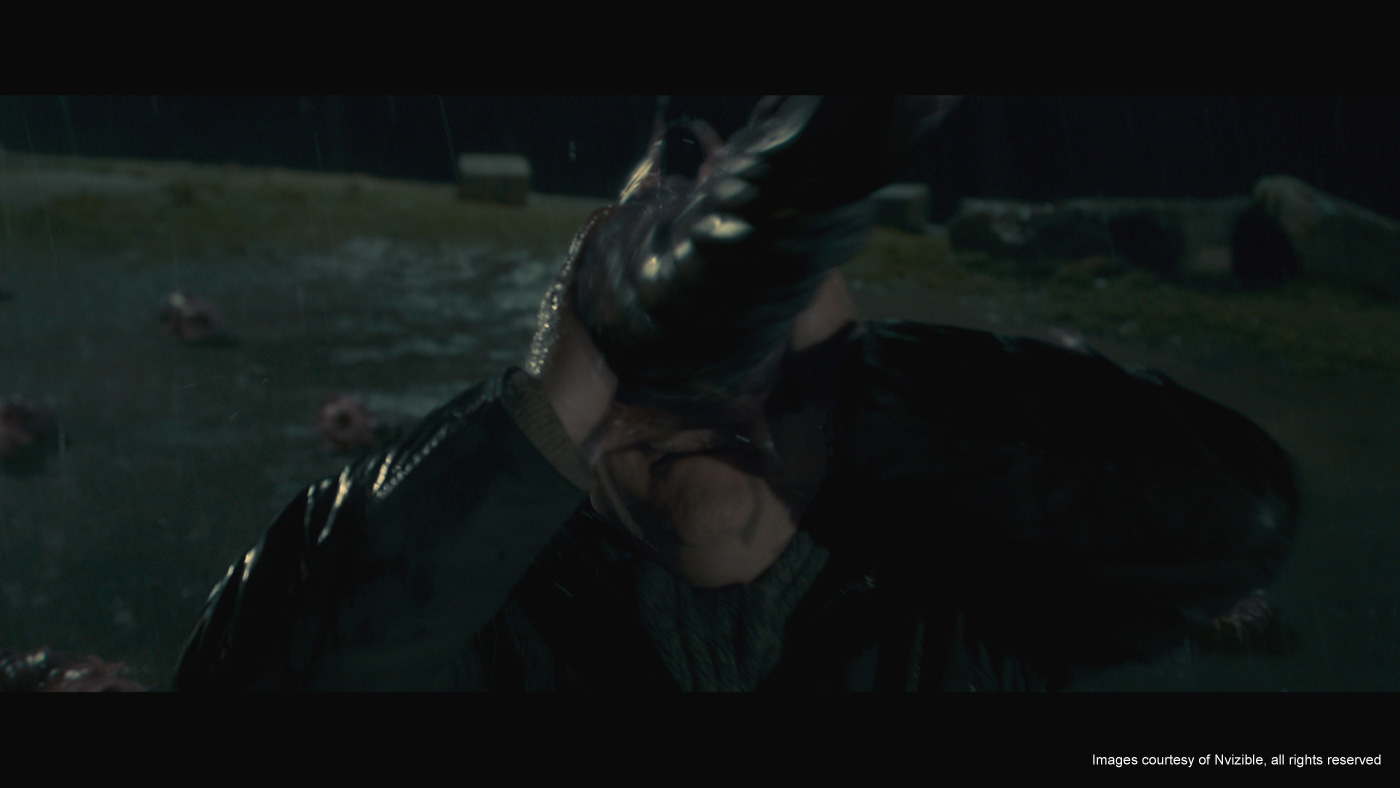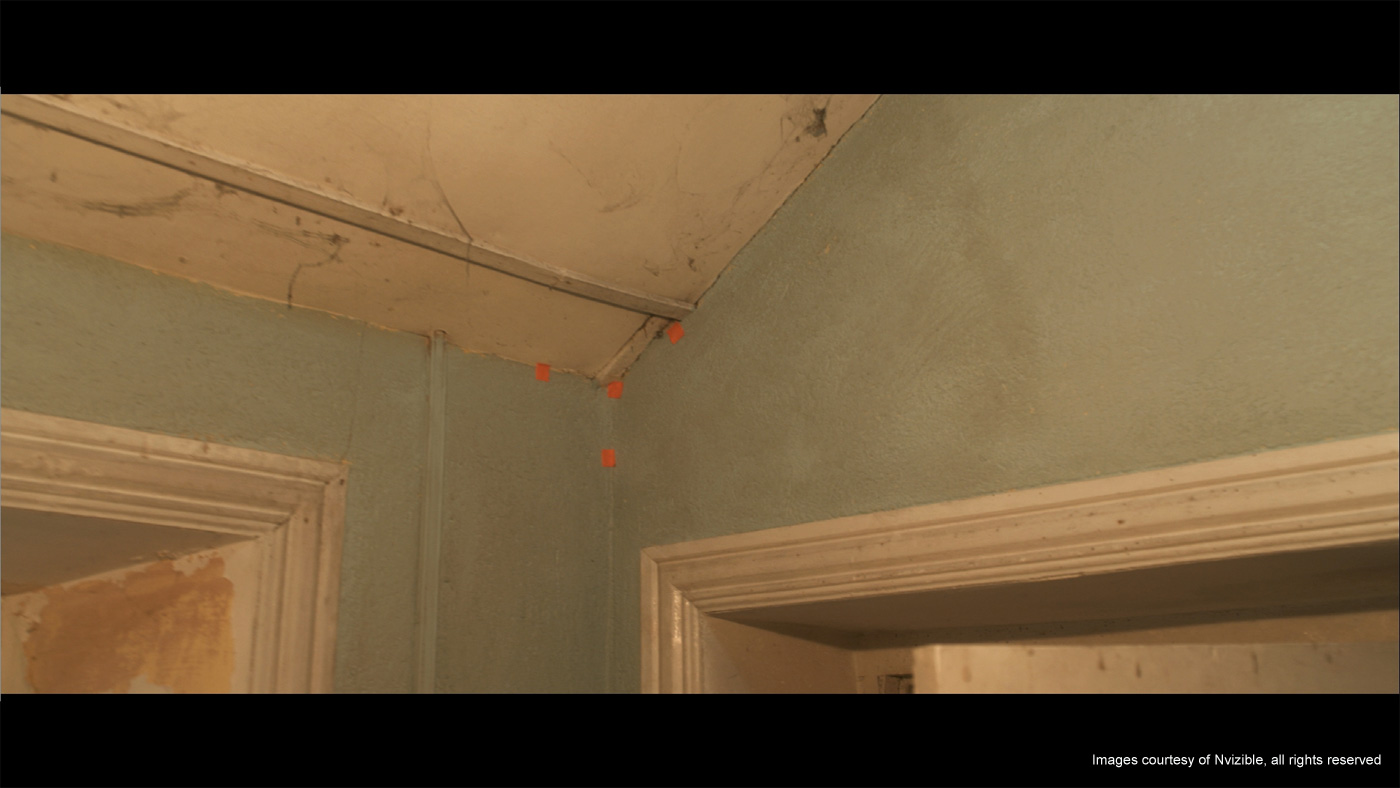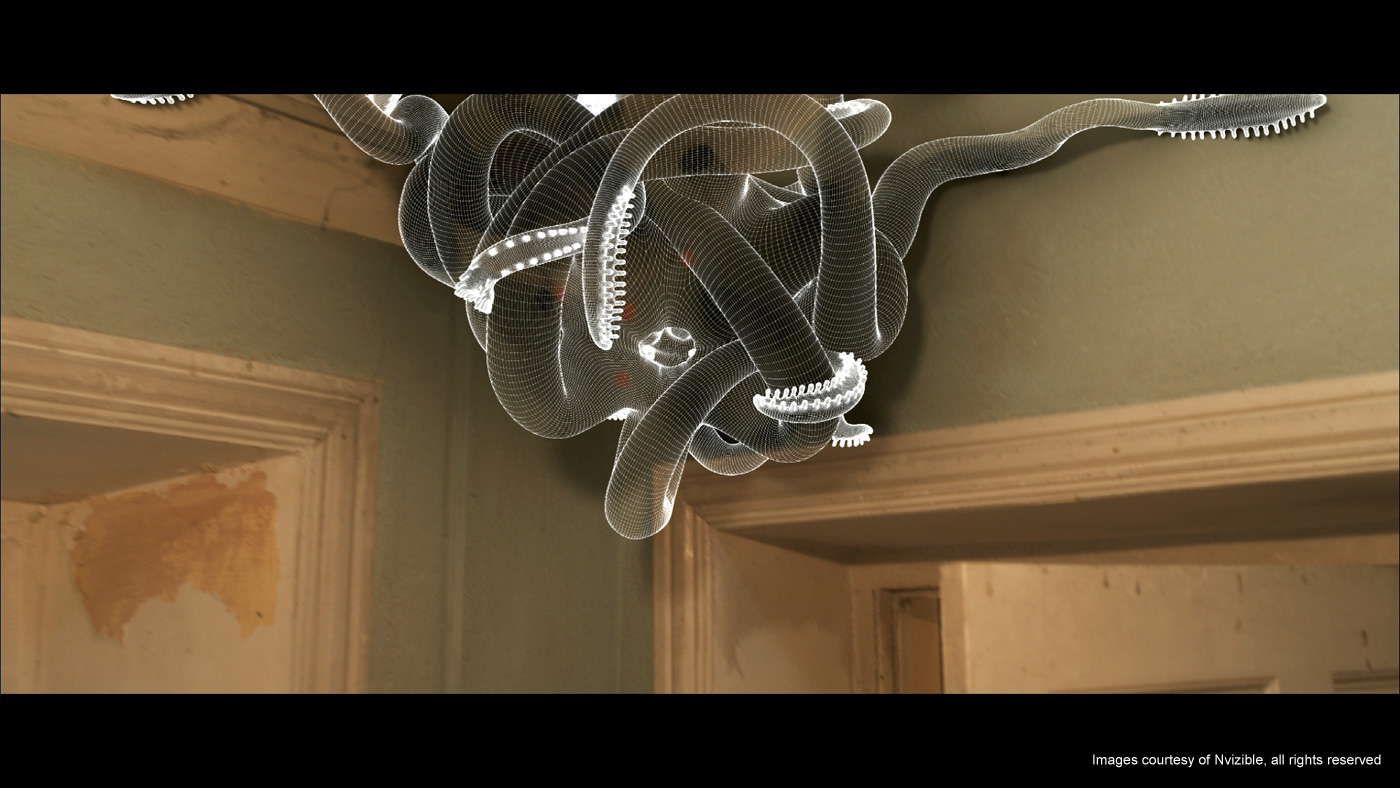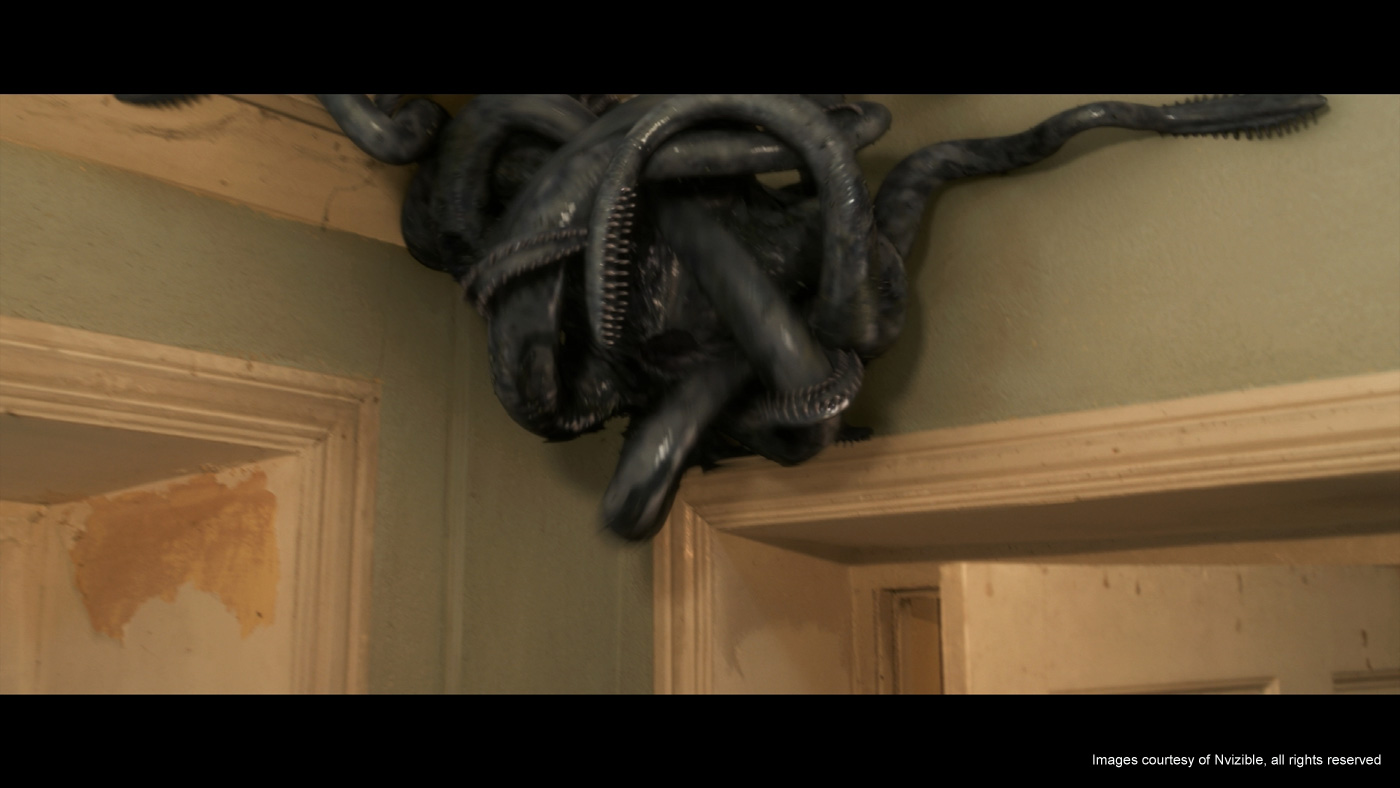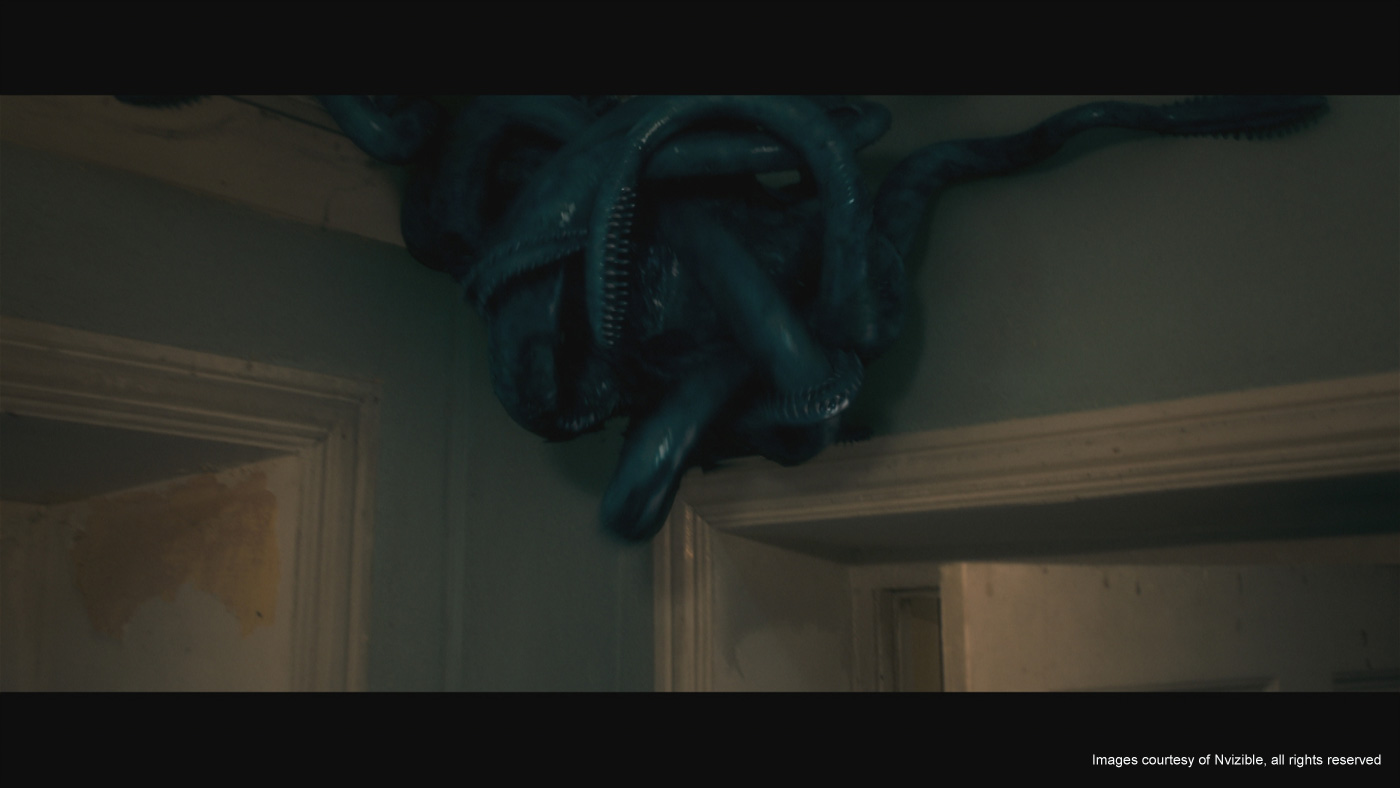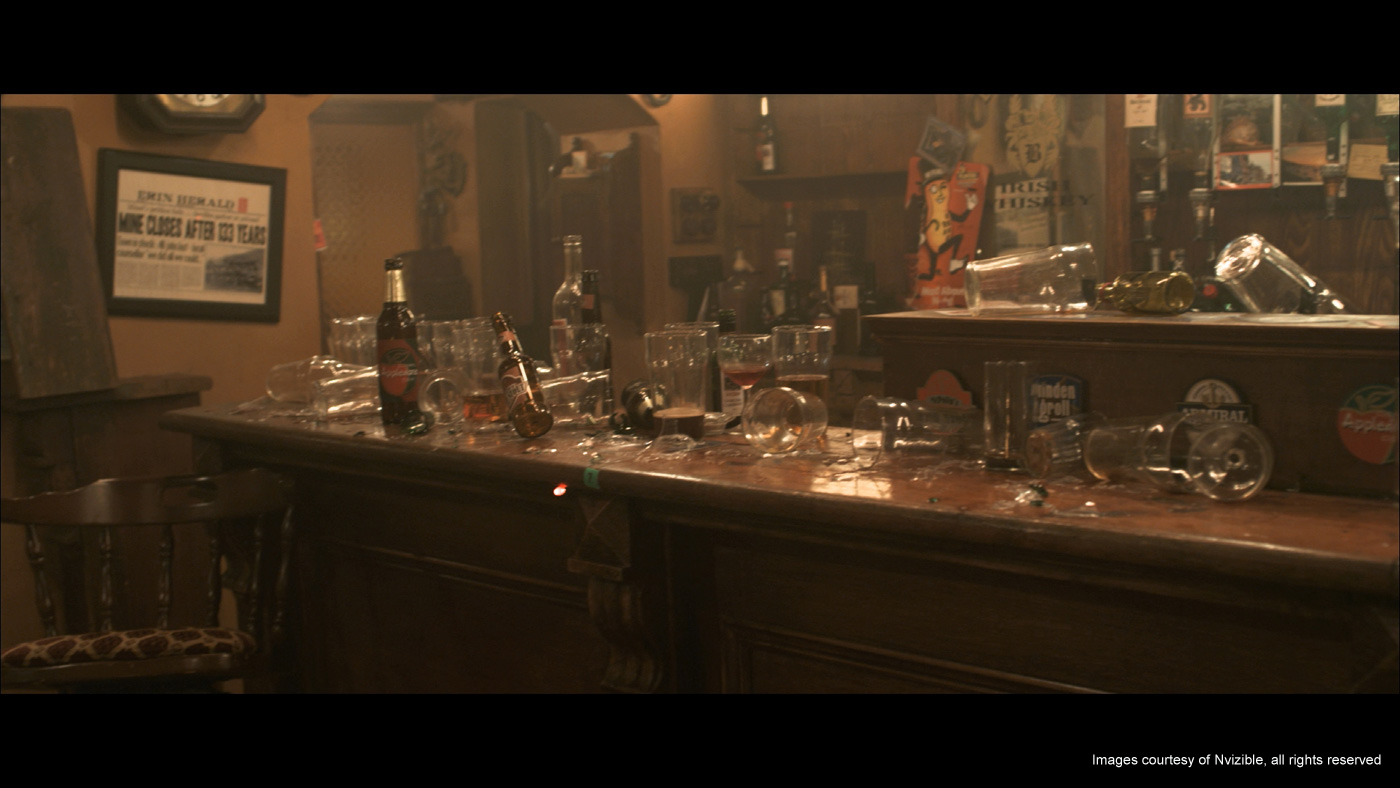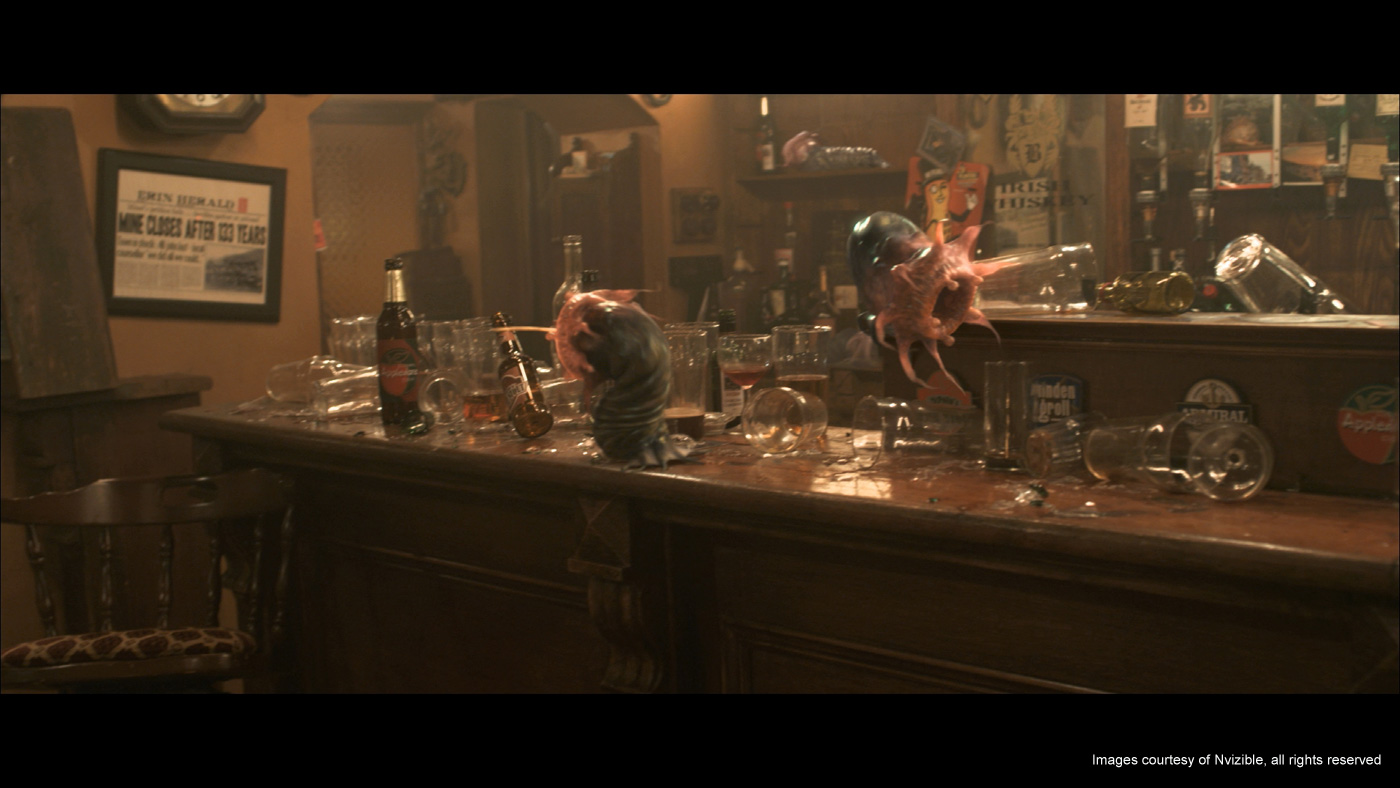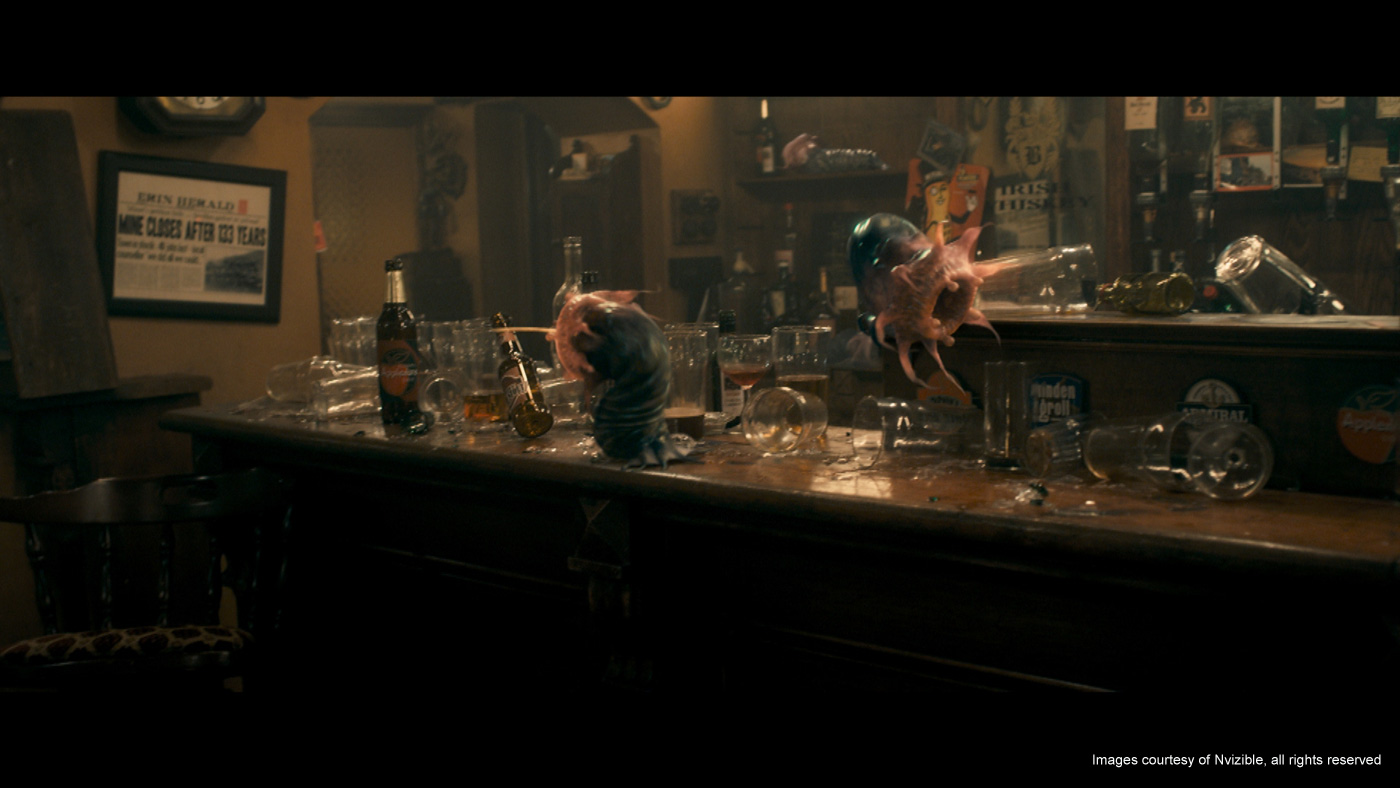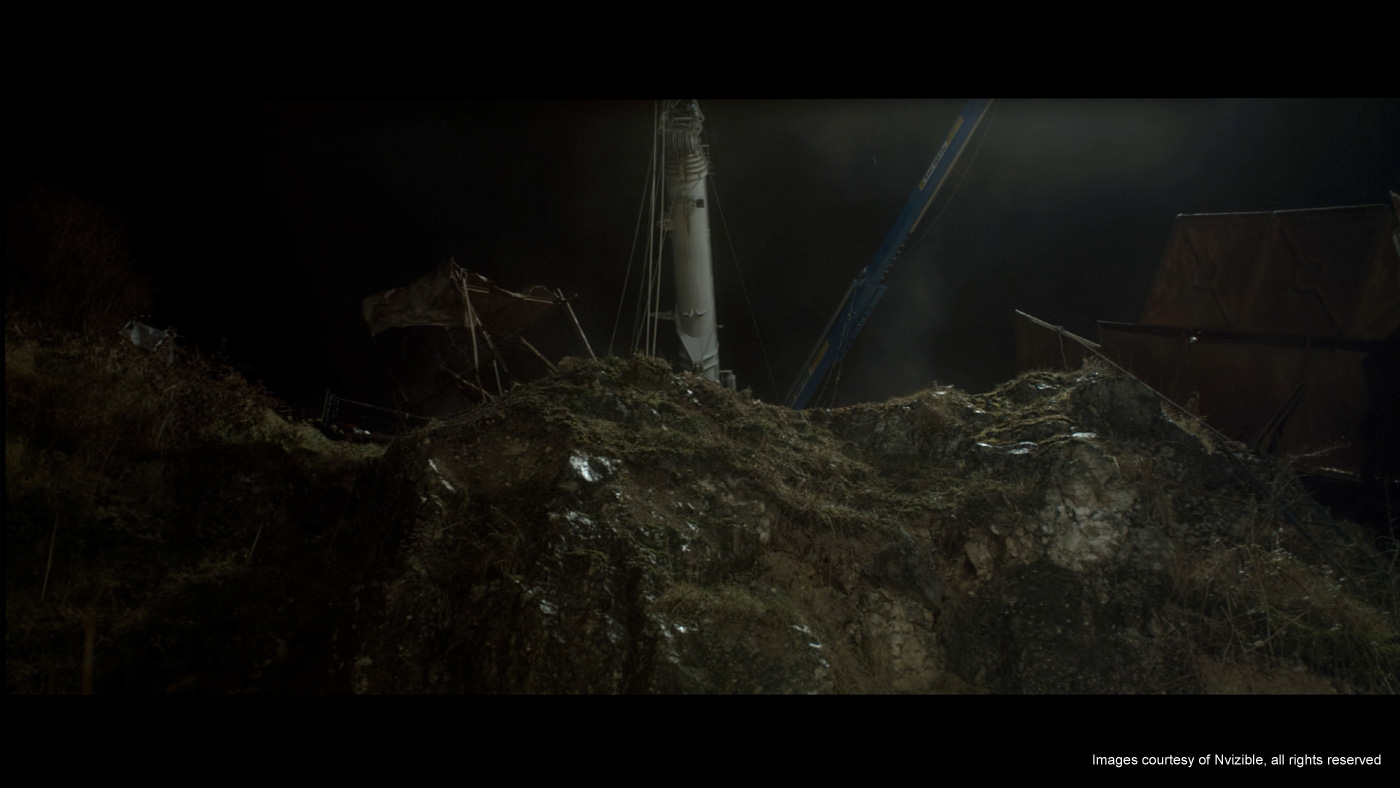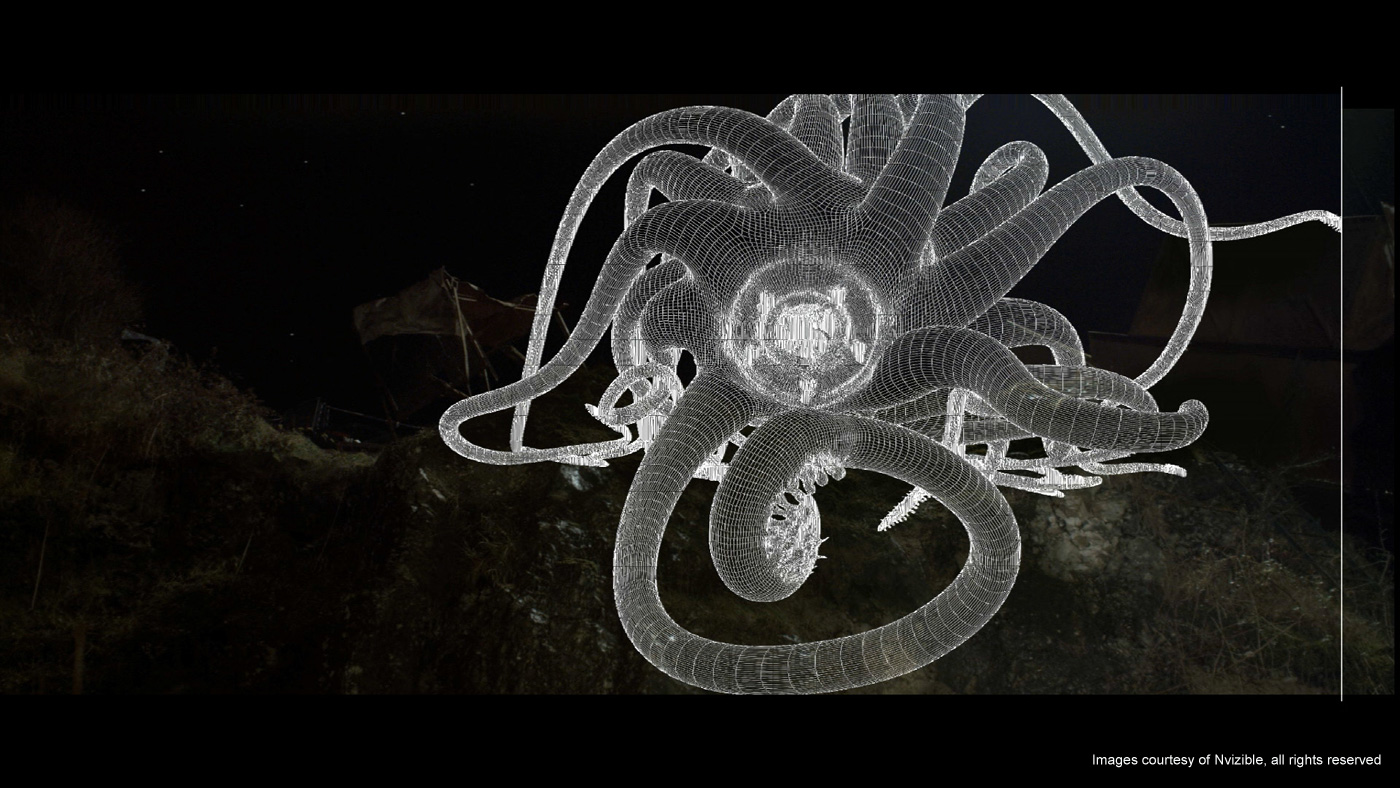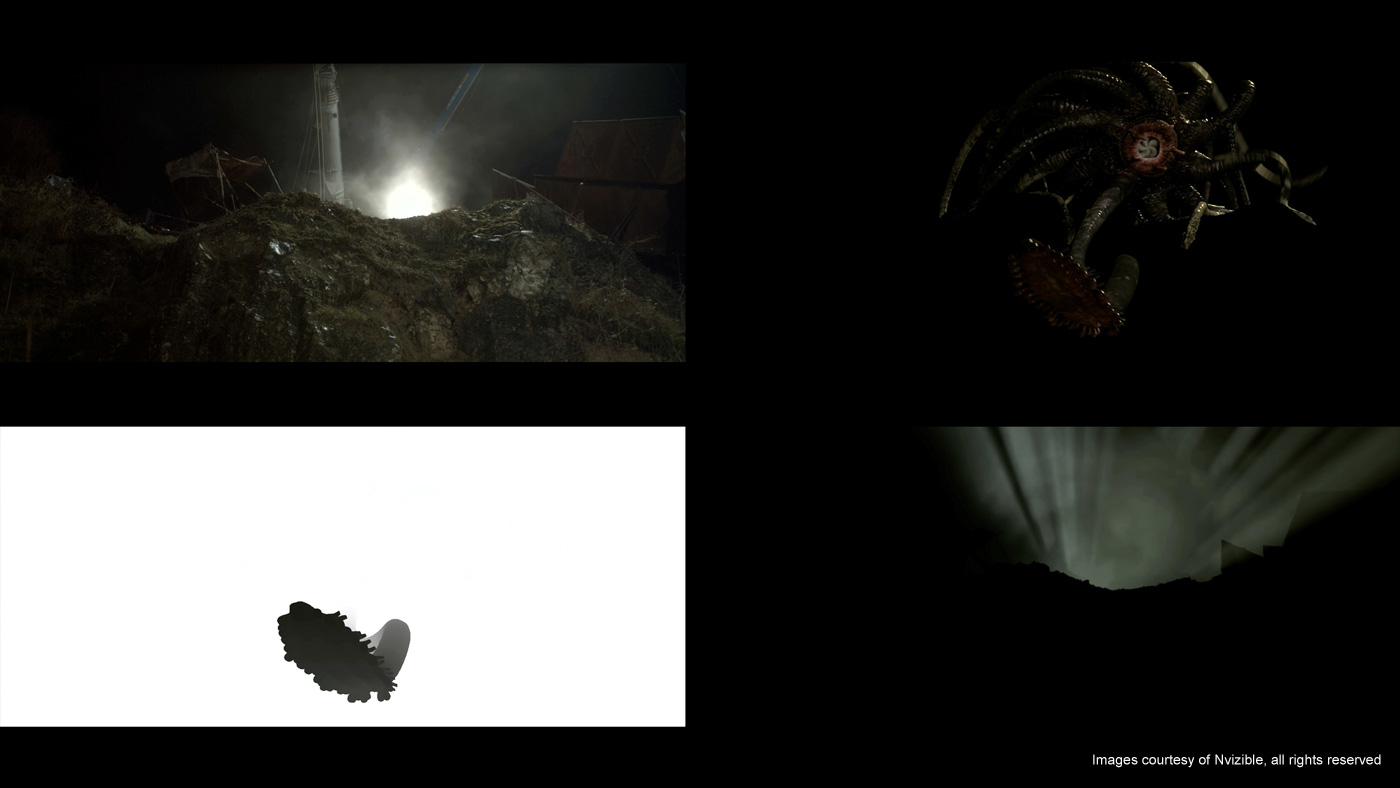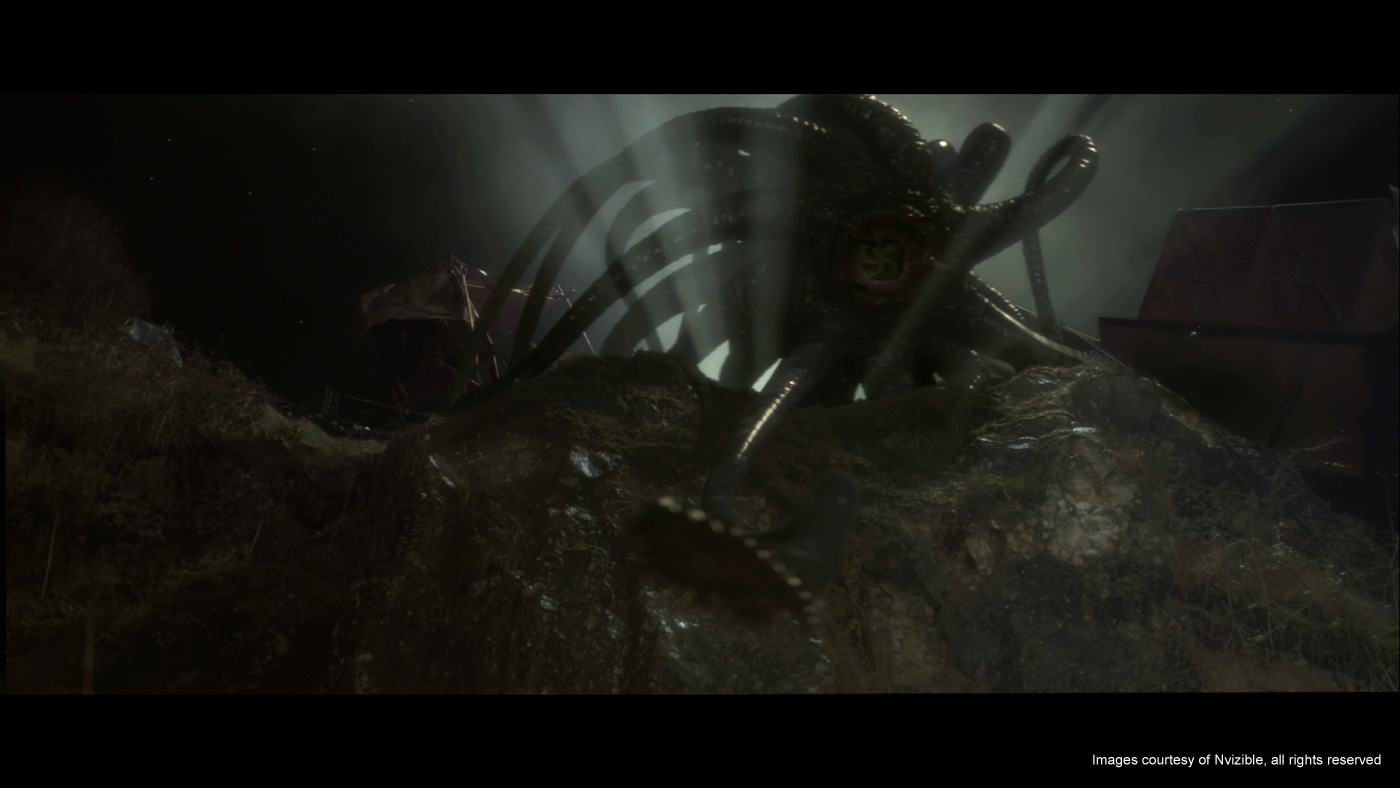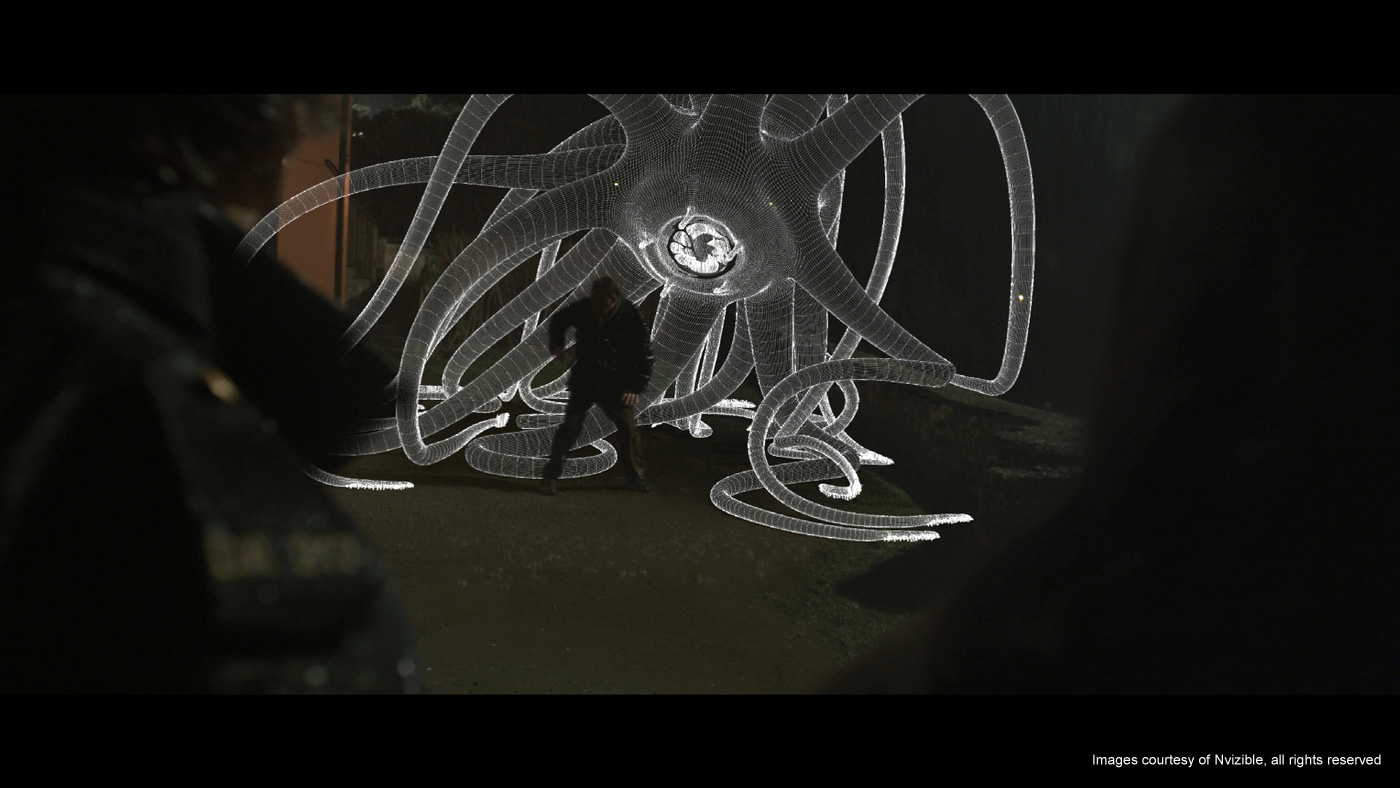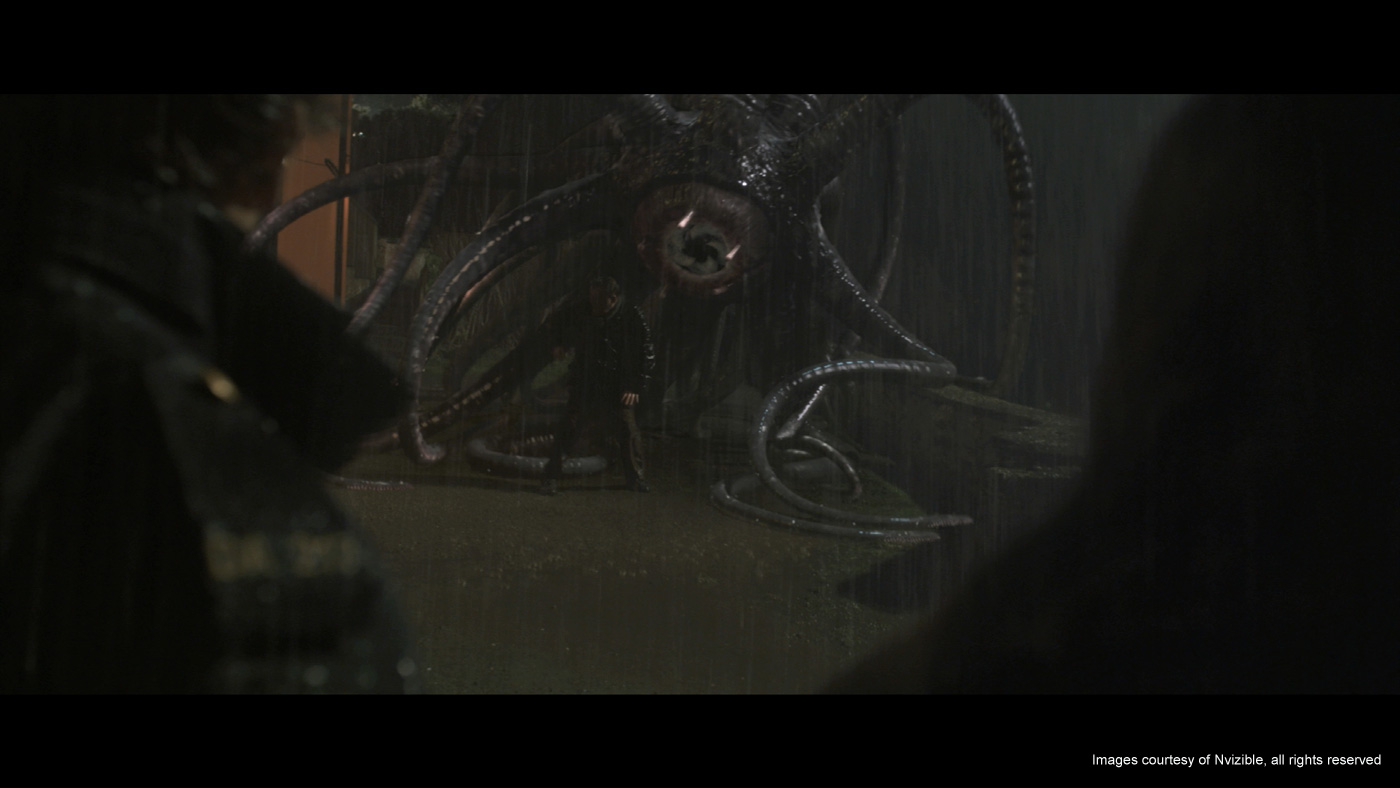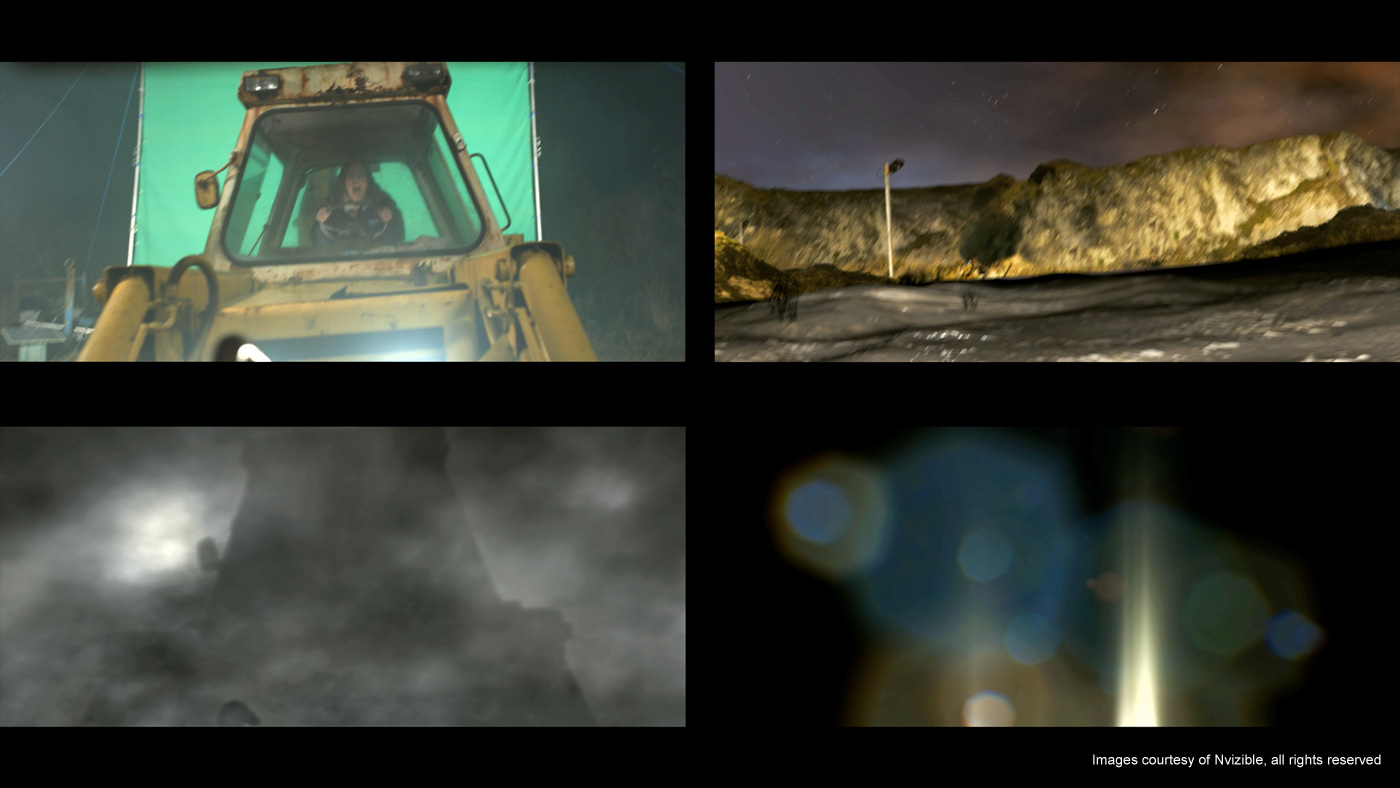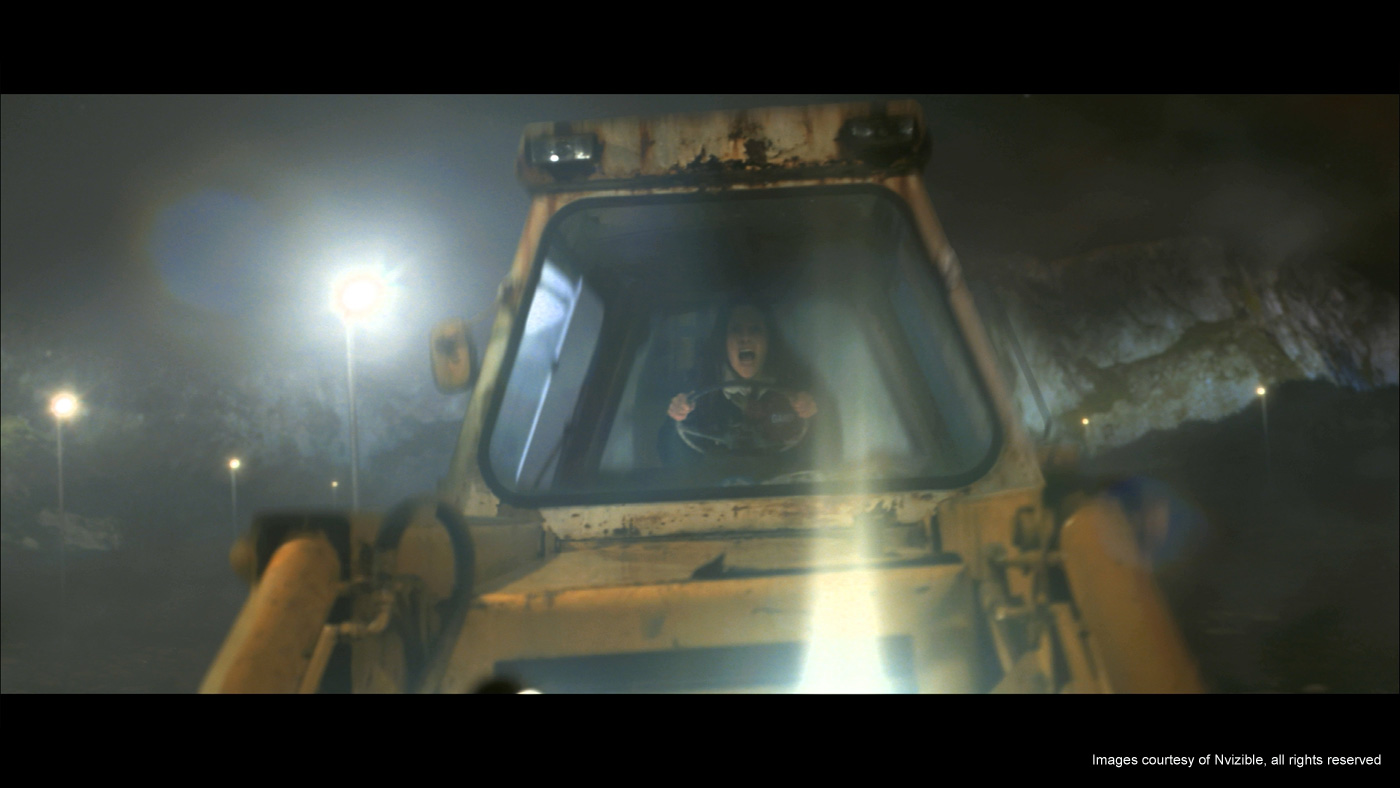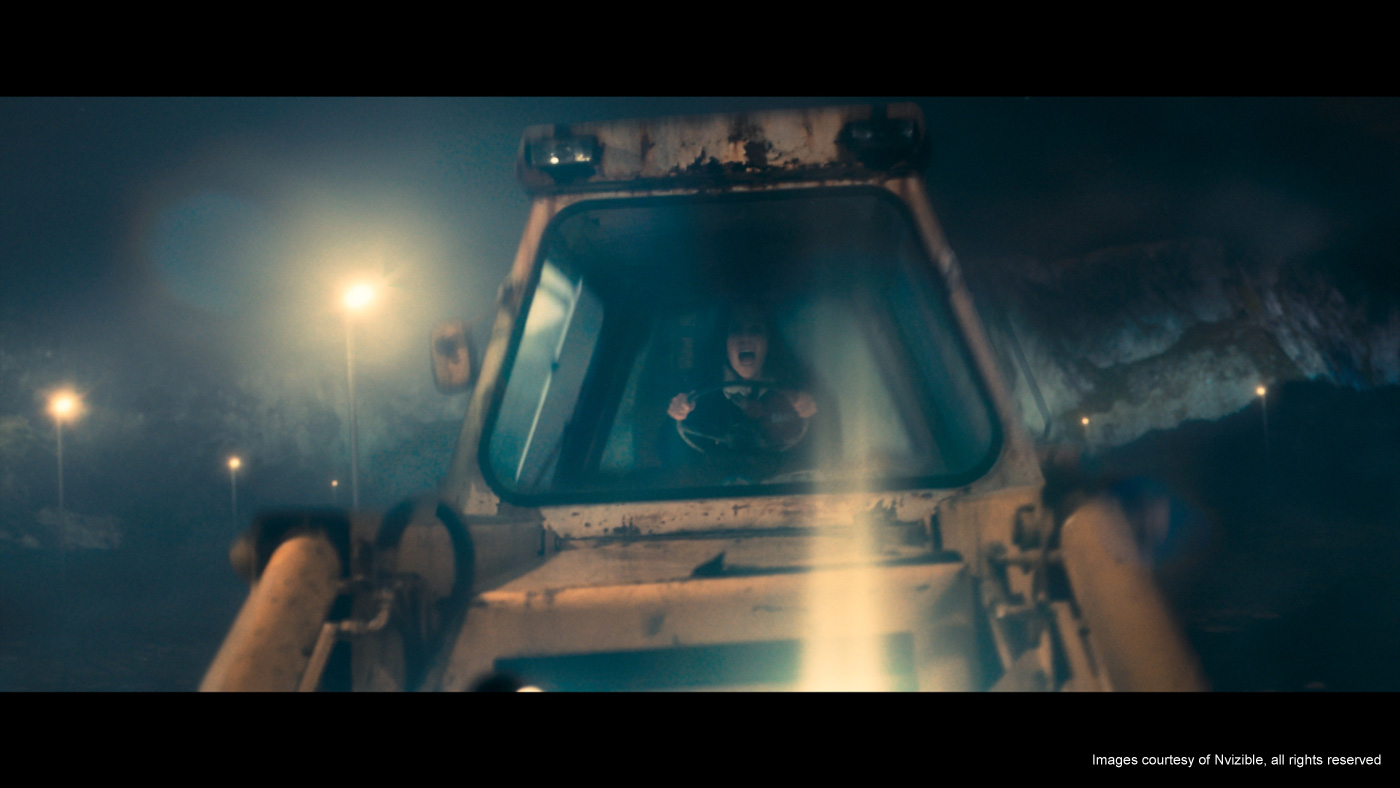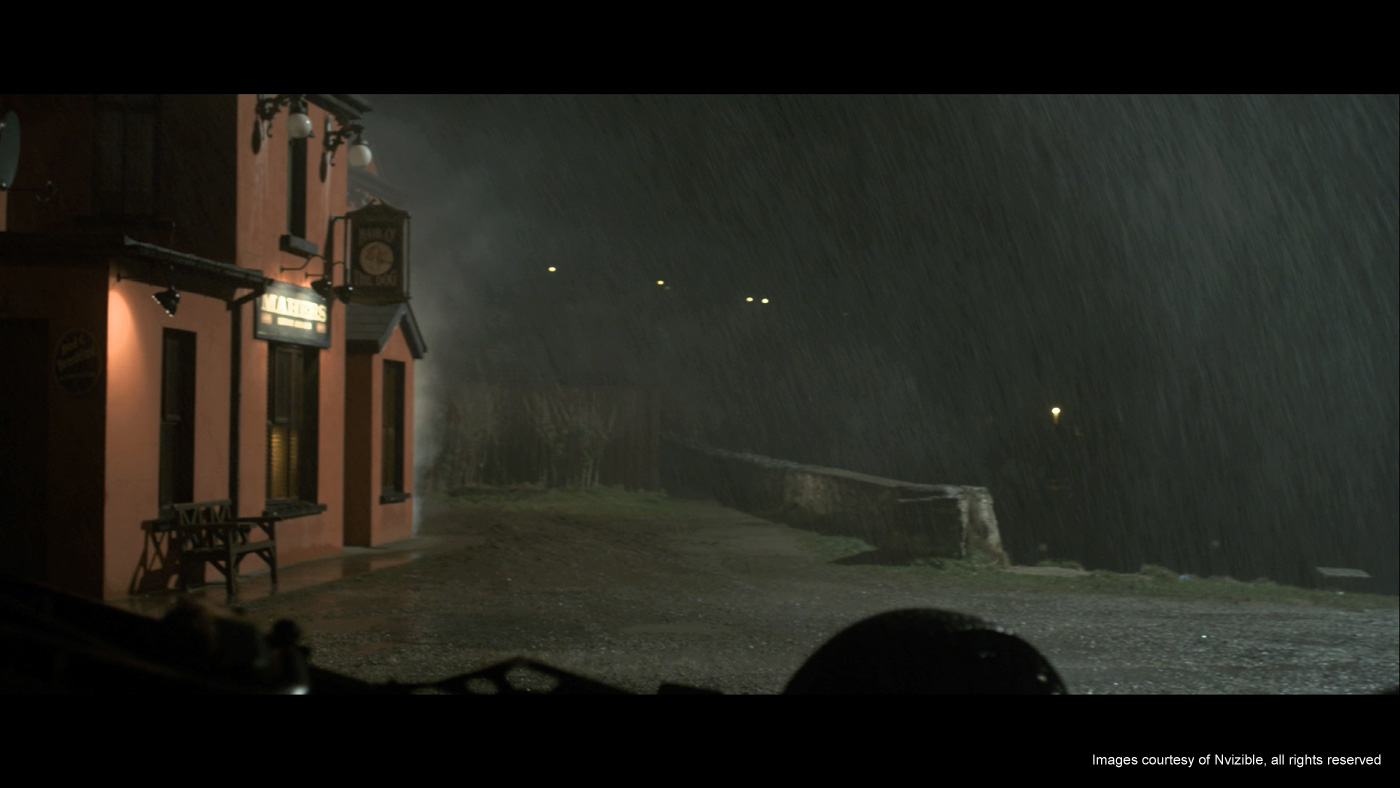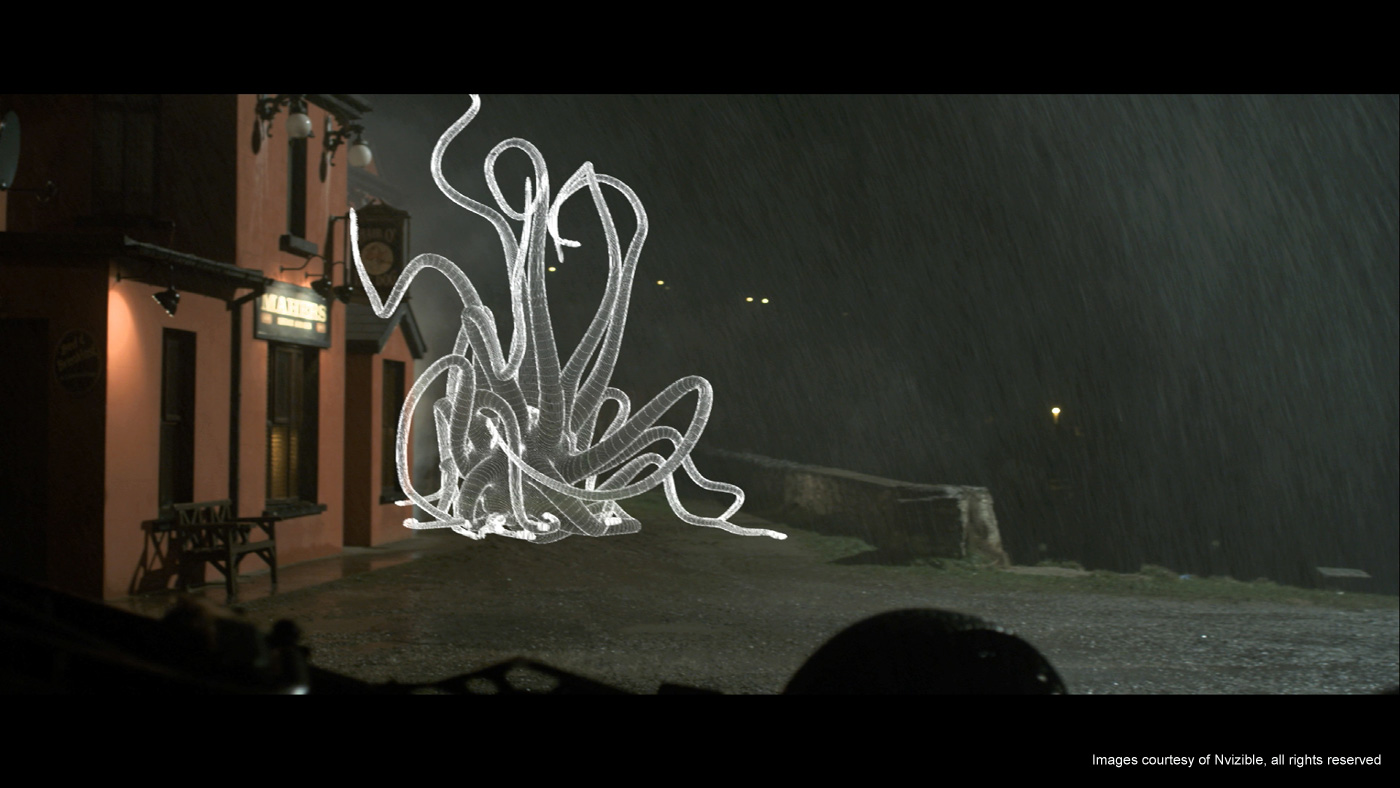Paddy Eason has been evolving for over 20 years in VFX. He worked for many studios such as Framestore, MPC or Rainmaker and participated in projects like MISSION IMPOSSIBLE, BIG FISH, THE GOLDEN COMPASS or PRINCE OF PERSIA: THE SANDS OF TIME. In 2009, he founded Nvizible.
What is your background?
Well, VFX wise, I’ve been supervising for maybe 10 years, but I do still try to keep my hand in as a compositor. I started out as a tech assistant at CFC (now Framestore), and came up through the ranks – paint artist, compositor, sequence lead etc. Before getting into the industry, I went to Art School, did Fine Art, with a particular interest in photography and film making.
How was the collaboration with director Jon Wright?
From my point of view, really good. Jon is the most open, engaged, articulate, flexible, determined director I’ve ever worked with. And he is utterly unflappable: anything that happens, he just takes it in his stride, and works out how to get the best result for his film from the situation. It was a very collaborative atmosphere – the producers, DoP, writer, editor and VFX dept were all working very closely together, and there didn’t seem to be any ego clashes, which is unusual, and wonderful. As ‘the VFX guy’ it as lovely to be allowed to have an opinion on things that weren’t directly related to VFX. There are one or two story beats in GRABBERS that I had an influence on – Kevin Lehane took my suggestions and wrote them into the script! You have no idea how happy that makes me.
Going back, it helped that I, and my colleagues at Nvizible had worked with Jon before, on his first feature, TORMENTED, which turned out pretty well. We only did a smattering of VFX work on that film, but I think we stretched their budget to give them quite a lot, and there were some good, gory moments in there. You can’t beat a good graveside decapitation.
What was his approach about visual effects?
Jon is a technically savvy director, and he is interested in the hows-and-whys of VFX, but not to the point that it becomes a problem! What I mean is, he trusted us to do our thing. I remember on TORMENTED being impressed that he had made a VFX shot list very early on, along with suggested approaches, drawings etc. I suppose on GRABBERS he didn’t get such a chance to do that early on, because we were involved from the start, but he certainly took a close interest.
I think at the start, Jon was more in favour of using ’80’s techniques – animatronics, prosthetics, keeping the creature totally in the shadows, and so on. As we moved forward, he allowed the balance to move further towards the CGI end of things when he saw what we could do.
How did you create the wide shot from Space?
It’s some high res public domain satellite photos of Earth wrapped onto a sphere in Nuke. There is a separate layer from some high res images of clouds floating just above, and shadows cast from them onto the Earth. We noticed that photos taken by astronauts from the International Space Station with DSLRs are showing city lights really well for the first time, so I based the look of the shot on them. As there weren’t enough high quality photos of the city lights of Ireland and Britain, I had to paint a lot of them manually. So, yes, all in Nuke.
Can you tell us more about the big impact in the sea?
We were really helped by the way the DoP, Trevor Forrest, lit the previous shot – there’s a lovely hard, swinging interactive light on the face of the boy that sets up the effect beautifully. The next shot, his POV, was based on the element I generated for the Earth-from-space shot, in which we get a look at the incoming meteor. That meteor element was made completely in Nuke, and was a long thin strip of noise texture, stretched, smeared and moved about to look (hopefully) like an incandescent lump of something extraterrestrial. We also added a few sprinkles of Maya particles at the last minute, but it’s mostly the Nuke textures. There’s an element of ocean waves that are illuminated briefly as the meteor approaches the sea, a glowing shock wave thing (based on reference of atomic tests), and a load of splash elements that we dug out of our Nvizible elements library. All in all, it was the kind of shot that on a big budget show you could’ve spent $50k on, and done a load of CG effects animation for – but we went for a more direct, stripped down, 2-and-a-half-D approach, keeping it all in Nuke.
The creatures have a great look. Can you explain to us more about its design?
The script was quite helpful in the way it described the creatures. For example – ‘A tornado of black feelers slither forward. 25 foot of ugly.’ Or – ‘It cascades towards him like a sticky spaghetti slinky; all tentacles tumbling.’
So having such visual writing really helps. I’m a huge fan of Kevin Lehane, who wrote the script. He’s got a few other amazing stories up his sleeve. Keep an eye on that guy.
Jon worked with a good storyboard artist on exploratory sketches that worked through some of the basic design issues – how large are the creatures? Where are the mouths, and what do they bite with? Do they have suckers on the tentacles or not? That kind of thing. Then Jon was also talking to Shaune Harrison, who was on board to look after the prosthetic creature effects. Shaune and one of his design people did some nice concept illustrations that took the design of the big creature forward.
When we came on board, one of the first things we did was employ a world-class creature designer and concept illustrator called Paul Catling, who worked with Jon for a few weeks on the three varieties of creature. Paul is amazing – he can do everything from a brilliantly loose and spontaneous ink sketch to a finely detailed almost photoreal rendering. By the end of the work with Paul, we all had a really good idea of how these beasts looked – scale, shape, basic colour, arrangement of mouth parts and eyes, all the kind of stuff. And we had some great paintings placing the creatures in a moment in the story.
I should say that the script is not particularly interested in the creatures’ life-cycle or biology. It’s all pretty suggestive and weird. Jon had some strong design thoughts about the importance of radial symmetry (these creatures don’t have an up or down, left or right, they ROLL). I added a thought about how they would have numbers of body parts in primes – so, 23 tentacles. It’s useful to set up these rules sometimes, to help you make decisions!
How did you manage the rigging and animation challenges for the Grabbers?
We had a great rigging TD called Andreas Graichen who worked with our CG Supervisor Martin Chamney on those challenges. The main issue was the fact that there were a LOT of tentacles on the main creatures to deal with. Given that there were so many, we couldn’t afford to have too many segments in the tentacles, or the rig would get too heavy. So that was one limitation that the animators had to deal with. Our CG Supevisor Martin Chamney developed some tools to help copy certain bits of animation from one tentacle to others. But really – very little of it was proceduralized. If it had been a 700 shot show with more creatures, we might have spent the R&D time to do that, but for this job, we relied on the skill and dedication of the animators. Inter-tentacle collisions, floor interaction, all the tentacles, mouth – it’s all keyframed. A little bit of secondary animation simulation was done on things like the eyestalks, to get a nice wobble.
What references and indications did you received from the director for the animation?
For the animation – nothing that specific. It was more a process of our animators doing motion studies (in prep), Jon reacting to them, and us all together getting a feel for what worked and what didn’t. I mean – there’s not too much reference out there for a 25ft high land squid, is there? We talked about buckets of eels a few times.
How was simulated their presence on-set and their interaction with actors and sets?
Very little. We had tennis balls on sticks a few times, when eyelines were important, but those occasions were few and far between. Mostly, it was a matter of Jon and I knowing the shot (having storyboarded it, and recced the location a few times), communicating the position and behaviour of the creature to the actors and to Trevor Forrest the DoP (who also generally operated the camera), and then shooting with just an empty space. If we were doing it now, I’d want to use our Ncam system (realtime camera tracking) to preview the creature through the eyepiece.
Where the creatures had to disturb things, we did arrange for physical gags to happen. There is a long steadicam shot in the bar, where the camera wanders through, viewing the baby Grabbers as they smash the place up (Gremlins-style). We’d storyboarded and prevised that shot, so had an idea of the likely actions of the Grabblings. Then, on the day, we walked through the physical gags with Andrew Hegarty the 1st AD and decided which chair should fall over, which glass should smash, etc. Then we stuck little numbers around the set to show the steadicam operator the marks he had to hit. When we shot the plate, there were a horde of people just off camera pulling fishing lines, rolling snooker balls across the floor and throwing beer bottles. Then, our challenge in post was to animate the creatures to justify all those physical actions nicely. I’m very pleased with the way it turned out.
In other cases, it was simpler. There are some shots of the big Grabber leaning over a cliff edge. So we got the SFX guys to shovel mud and stones over the edge, as if the creature was dislodging them.
For the ‘face hugger’ scenes featuring the female Grabber, Shaune Harrison and his team build half the creature in silicone, so we could strap it to the stunt performer’s face. This gave him something to fight with. The ‘missing’ part of the creature was studded with red LED tracking markers, to allow us to match move it very accurately, and add flailing CG tentacles. So, in those cases, the creature is half physical, half CGI.
Have you created some previz especially for the final battle?
Yes, we did previs quite a few scenes during prep. I think this helped Jon visualize some key moments. We had to shoot very fast, so it really helped to have rehearsed some of the visual issues well ahead of time.
How did you adapt your pipeline to face this project?
As a company, Nvizible is quite new, and we hadn’t done all that much CG prior to GRABBERS. Some CG sword blades for PRINCE OF PERSIA, some CG hailstones for LEAP YEAR. Not a lot! But as individuals, our CG leads were pretty seasoned professionals. Martin Chamney, the CG Supervisor, Stefan Gerstheimer, look dev, Andreas Graichen, rigging, Jon Kay our lead animator – these guys have been around the block. And our sister company, Nvizage, have been doing previs with quite sophisticated animation techniques – forever. But as a company, Nvizible’s CG pipeline – particularly for creatures – was built brand new for this project. The software was Maya and Mudbox for modelling, Mari and Photshop for look dev, Maya for animation, renderman for lighting, Nuke for compositing.
What was the biggest challenge on this project and how did you achieve it?
I would say, probably animating all those tentacles, and working out when we’d reached a level of polish that looked good. On a tight budget, you have to know when to say ‘enough!” in certain disciplines. The animators will always want to carry on refining, and I think the tentacle animation was tough to get through simply because it was so time consuming. The guys did an amazing job.
Is there an invisible effects you want to reveal to us?
Well, the landscape behind the pub that you see a few times – beautiful high green hills – isn’t really there. The land behind the pub location we used (Moville in Donegal) isn’t actually all that picturesque, so we took some stills I shot elsewhere and comped them in there.
A couple of shots we’re very proud of – near the end when Lisa the heroine is driving a digger – we weren’t able to shoot those for real because Ruth Bradley can’t drive a JCB. So we had a stationary JCB parked in front of a greenscreen, with Ruth pretending to dive. Trevor the DoP ran with his camera at the front of the JCB while SFX blew smoke past and the lighting guys swung their lights. But – we didn’t have time to shoot backplates to go behind the ‘moving’ digger! So – we found a load of stills of the location taken by Martin and I and we made a 2.5 D version of the location in Nuke, using the photos on cards. I think it looks pretty convincing in the end. Adam Rowland, our lead compositor, did and amazing job. He’s the lens flare ace.
Was there a shot or a sequence that prevented you from sleep?
Well, the face hugger scene in the marine lab was one of the first that we started on. The fact that we had stuck a flexible rubber creature onto the face of stunt guy, who then threw himself around, all shot with a frantic hand held camera… and then we had to seamlessly attach CG tentacles to it all – that was a worry for a while. But I have to say, our matchmove guys and animators nailed it pretty quickly. I’d like to single out animator David Bryan here – great job.
What do you keep from this experience?
A friendship and hopefully a continuing working relationship with many of the people on the production. Kate Myers and Tracy Brimm at the production company Forward Films, Jon Wright the director, Kevin Lehane the writer, Trevor Forrest the DoP – they are all friends now. When you’ve spent time together standing on a rainswept dockside at 3am trying to work out how to shoot a scene on the deck of a boat, there’s a certain bond!
How long have you worked on this film?
We did the design and prep work in late 2010. The shoot was 7 weeks over mid winter 2010/2011. We did the post through 2011 – finishing around Nov 2011. So really, over a year. But VFX post was really about 9 months. A good long time, which enabled us to have a smaller team of people, all of whom were working very fast and efficiently.
How many shots have you done?
About 220.
What was the size of your team?
About 20 people worked on the VFX for the film at Nvizible. Some camera tracking and cleanup work was outsourced to another London company.
What is your next project?
Right now I’m looking after the VFX for a lovely little romantic comedy for Working Title called I GIVE IT A YEAR. Also I’m helping out on a little thing called SKYFALL.
I’m also really, really hoping that Jon Wright’s next film starts up soon – I think he’s going to be landing us with another great big VFX challenge!
What are the four movies that gave you the passion for cinema?
2001: A SPACE ODYSSEY
BLADE RUNNER
BEDKNOBS AND BROOMSTICKS
A MATTER OF LIFE AND DEATH
A big thanks for your time.
// WANT TO KNOW MORE?
– Nvizible: Dedicated page about GRABBERS on Nvizible website.
// VFX BREAKDOWNS – NVIZIBLE
© Vincent Frei – The Art of VFX – 2013



